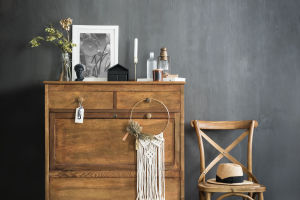To cultivate potted roses successfully, it is important to provide the right growing conditions. Start by preparing a mixture of equal parts sandy soil and vermiculite soil. This combination provides the necessary nutrients, drainage, and aeration for healthy root growth.
It is also recommended to provide about 4 hours of direct sunlight and maintain a suitable temperature of 20 to 25 degrees Celsius. Make sure to water your potted roses regularly, regardless of the season, to maintain hydration and moisture.
During spring and autumn, water your plants once every 2 to 3 days. In the growth period, fertilize your roses once every half month or so. Finally, it is important to change pots and prune as necessary.
Similarly, bonsai plants require specific care and management to thrive. Start by placing your bonsai in a bright and well-ventilated location. Avoid frequently moving your bonsai as this can cause growth difficulties.
For raw piles, it is recommended to avoid moving them within three months, while mature piles can be rotated 180 degrees every half month. In summer, it is important to provide shade and place the bonsai in a ventilated and cool place to avoid strong light.
When watering your bonsai, it is important to follow the principle of no dryness without watering and watering thoroughly to avoid the formation of stagnant water in the soil. The growth container of bonsai is small, so it requires regular fertilization during the growth period.
Make sure to supplement the soil with many trace elements. Fertilization for bonsai should be thin and diligent, generally in the spring and autumn, chasing a thin compound fertilizer, and avoiding fertilization in summer and winter.
It is essential to provide good drainage for potted plants. Make sure that the pot has a large drainage hole unless you are cultivating aquatic plants. For larger pots, a bigger drainage hole is necessary to avoid soil water accumulation.
The bottom of the pot can be padded with broken tiles or particles to avoid clogging the drainage hole. Choosing the right pot size is also crucial for healthy plant growth.
If the plant is small, avoid choosing too large pots as too much soil inside can lead to moisture accumulation, which can be difficult to disperse. For low-vigorous plants, choose a deeper container to accommodate the root system.
Soil quality is critical for plant cultivation. You can purchase suitable potting soil or make your own by mixing compost soil with appropriate peat soil. Add 2 to 3 equal parts of river sand to the soil to increase drainage and permeability.
If you are reusing soil, make sure to sterilize it before use. Expose the soil to sunlight for a few days for sterilization.
Different bonsai species have varying temperature requirements, and it is important to pay attention to temperature control during winter. For most bonsai flowers, maintain the indoor temperature above 10°C in winter.
For some plants that need to be vernalized, the temperature can be controlled at about 4-10°C.
Finally, choosing the right pot color can also promote healthy plant growth. Light-colored pots reduce heat absorption and keep the roots cool and moist. Select a light-colored pot to ensure proper sunlight exposure in summer, which will keep your plants green and shiny.
Alternatively, if you are cultivating heat-loving plants, choose a dark-colored pot.


